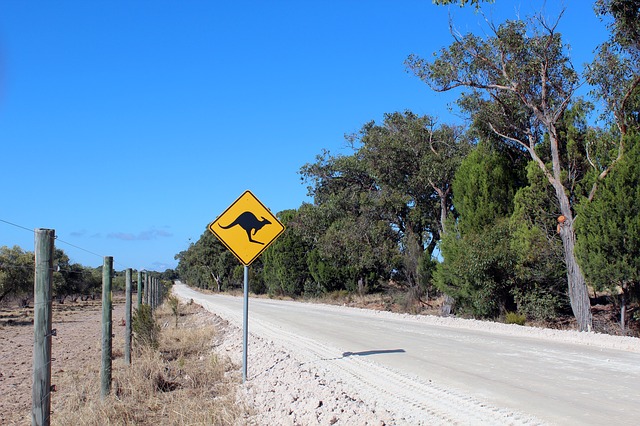
Safe Driving in Australia
Apex Car Rentals is committed to ensuring you have a safe and enjoyable driving holiday in Australia. Please take the time to read through the road rules and information provided below to ensure you’re ready for the road ahead.
Rest Before Driving
If you are arriving on a long-haul flight, consider staying overnight in that destination. That will ensure you are fresh and ready for the drive ahead.
Take Regular Breaks
It’s easy to underestimate driving times in Australia. It’s a very big country and you should check the expected drive time before hitting the road. Take plenty of breaks along the way and give yourself additional travel time to rest, eat, and stretch your legs. Plan to drive for only 1 – 2 hours at a time to break up your journey.
Keep Left
Always drive on the left side of the road. If you drive on the right side of the road in your own country, please remember to keep left when pulling out onto the road – sometimes it’s easy to forget where you are!
Giving Way at Intersections
In general, if you’re turning, give way to all vehicles that are not turning. Always use your indicator when turning.
Hand-held Mobile Phones
Drivers must not use a hand-held mobile phone when driving, unless the device is completely hands-free or mounted securely to the vehicle – and touched infrequently and briefly. Writing, reading or sending text messages on a mobile phone while driving is also illegal.
Roundabouts
Many intersections are controlled by a central roundabout. Roundabouts manage traffic flows on either single lane or multiple lane roads. The roundabout sign means Slow Down, prepare to Give Way and if necessary stop to avoid a collision. As you’re approaching a roundabout, you must get into the correct lane, indicate if turning, and give way to traffic already on the roundabout. Enter the roundabout when there is a safe gap in the traffic.
Travelling Times
It’s easy to underestimate travelling times in Australia. Distances may seem shorter on paper, but Australia is a vast country and you need to prepare carefully.
When you’re tired you’re much more likely to have a crash. Here are some tips to help you stay alert:
- Get plenty of rest before a long drive.
- Take a break from driving every two hours.
- If possible, share the driving with someone else.
- Avoid large meals and drink plenty of fluids.
- If you begin to feel sleepy, stop at a safe place and try to have a short sleep for up to 40 minutes.
- If you’re feeling very tired, find a place to stay overnight.
- Australia has beautiful, spectacular scenery. If you stop to view or photograph it never stop on the road. Always pull off the road to a safe area.
Tips for Front Seat Passengers
Front seat passengers can help the driver by operating the GPS for them and should always be aware that they should be on the left hand edge of the road, not the middle.
Sharing the Road with Cyclists
Cyclists have the same rights as drivers on Australia roads. Always slow down near cyclists, pass slowly and only when safe, and try to leave a space of 1.5 metres. Indicate in plenty of time and respect cycle lanes.
Alcohol and Drugs
Don’t drink or use drugs and then drive – the laws against this are strictly enforced in Australia and penalties are severe. In Australia, you are not permitted to drive a car if your blood alcohol level is 0.05 per cent or higher. If you hold a probationary or provisional driver’s licence, your blood alcohol level must be zero at all times. Driving after taking drugs that affect your ability to drive is illegal and penalties are severe.
Driving Speeds
Speed limit signs show the maximum speed you can travel. At times you may need to drive at a slower speed due to road, weather or traffic conditions. Speed limits are strictly enforced in Australia and you must not drive above the speed limit at any time. You should be especially careful in residential areas and in school zones.
In urban areas, the speed limit is usually 50km/h unless a sign says otherwise.
On most of Australia’s main rural roads, the speed limit is 100km/h unless a sign says a lower speed applies. The speed limit is generally 100km/h on motorways.
Safety Belts
By law, everyone in the vehicle must wear a safety belt or child restraint – whether they’re in the front or back. Children under seven years of age must be secured in an approved child restraint appropriate for the child’s size and weight. Children aged seven must be secured in a child restraint if such a restraint is available.
Driver Licence Requirements
You must have a current and valid full driver licence to rent a car from Apex Australia. If you have an International Driving Permit you must also carry your current and valid driver licence. If your overseas driver licence is not in English, you must also carry an accurate English translation or International Licence issued by one of the following:
- A National Accreditation Authority for Translators and Interpreters (NAATI) – www.naati.com.au – or an Australian Institute of Interpreters and Translators (AUSIT) – www.ausit.org – accredited translator.
- A diplomatic representative at a high commission, embassy or consulate
- The authority that issued your overseas licence
IMPORTANT NOTE: An International Driving Permit (issued in accordance with a United Nations Convention on Road Traffic) is acceptable only as a translation.
Overtaking
Overtaking manoeuvres can be dangerous and you should be made with extreme care. If you’re not sure it’s safe to overtake then wait until you have clear visibility ahead and enough clear road to complete the manoeuvre.
When overtaking you must:
- Not go over the speed limit
- Make sure the road ahead is clear and that there is sufficient space for you to complete the manoeuvre (check side streets and other lanes to ensure nothing will enter this space while you are overtaking)
- Check mirrors
- Signal each change in position long enough to give sufficient warning to others
- Check blind spots for motorcycles and other vehicles before changing your lane position
- Pass the vehicle with sufficient space to avoid a collision (you should be able to see the vehicle you have overtaken in your rear vision mirror before you move in front of it)
- Give way to traffic already in the lane you are moving to.
You must not overtake:
- Unless you have a clear view of any approaching traffic and you can complete the manoeuvre safely (do not commence an overtaking manoeuvre when approaching a crest, curve or any limited vision situation)
- Another vehicle that is stopping or has stopped at a pedestrian crossing, intersection or railway crossing
- Across an unbroken (continuous) line, unless the line closest to you is broken
- Where a road narrows.
- On roads with a speed limit of more than 80 km/h, or a KEEP LEFT UNLESS OVERTAKING sign, you must drive in the left lane unless you want to overtake or turn right.
When being overtaken you must:
- Not increase your speed
- Keep left and allow reasonable space for the overtaking vehicle to pass and move back into the lane
- Keep within your lane.
Animals on the Road
Watch out for farm animals on the road, particularly in rural areas. When you see them, slow down and do not sound your horn – it may startle them. You may need to stop and let the animals go past or move slowly behind and follow the farmer’s instructions. Also be alert for wildlife on the road, such as kangaroos, emus, wombats and koalas. You should always be travelling at a safe speed, so when required you can further reduce your speed.
Unsealed (Gravel) Roads
Avoid unsealed roads if possible. If you need to drive on them, remember they can be very narrow. Reduce your speed and slow down even further when approaching oncoming traffic as dust could obscure your vision and loose stones could chip your windscreen.
Rail Crossings
When you see a stop sign at a crossing, stop and only cross the track if there are no trains approaching. When you see a give way sign, slow down and be ready to stop and only cross the track if there are no trains approaching.
Vehicle Break Downs
Do not leave your vehicle if it breaks down, as it will provide you with shade and protection from weather conditions. Wait for help to come to you.





